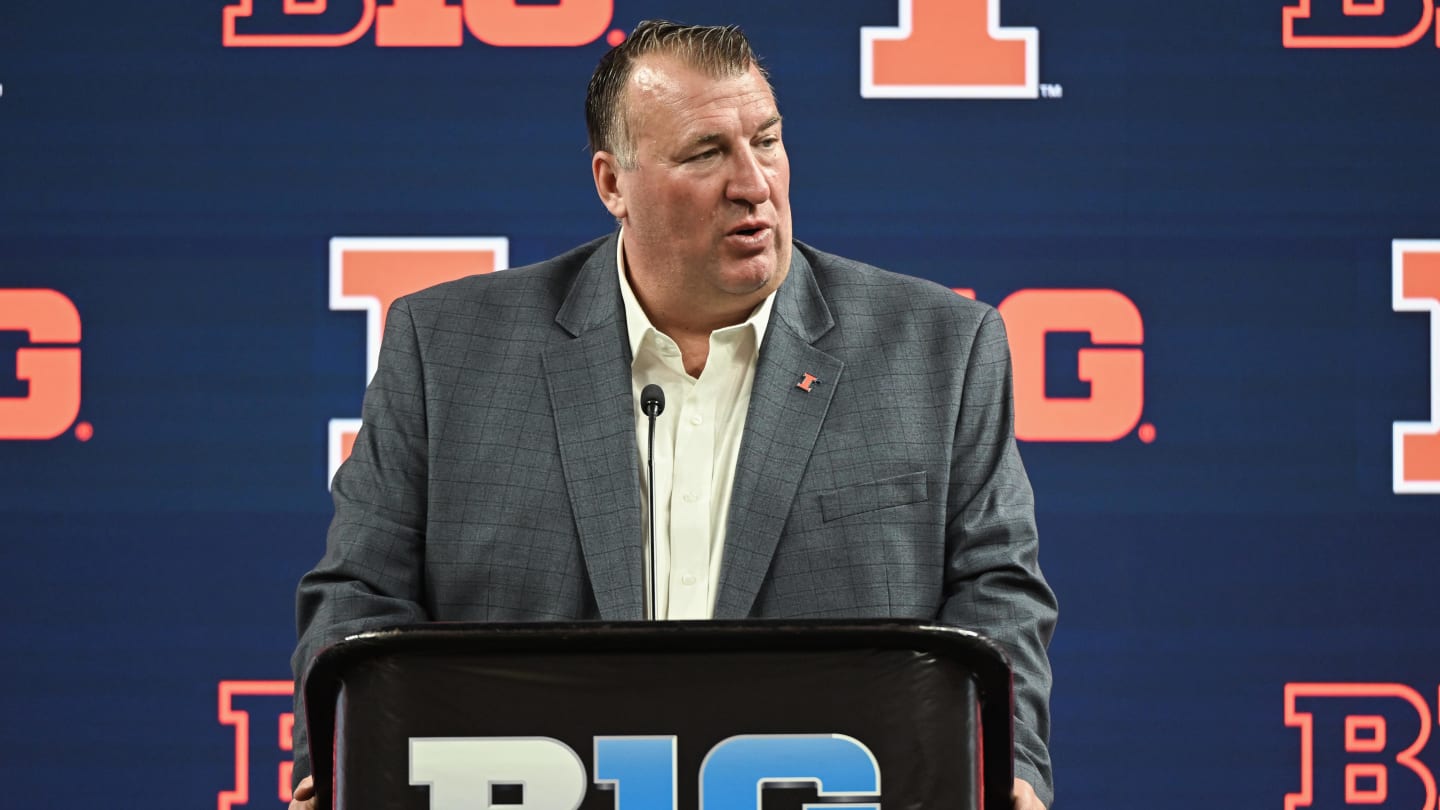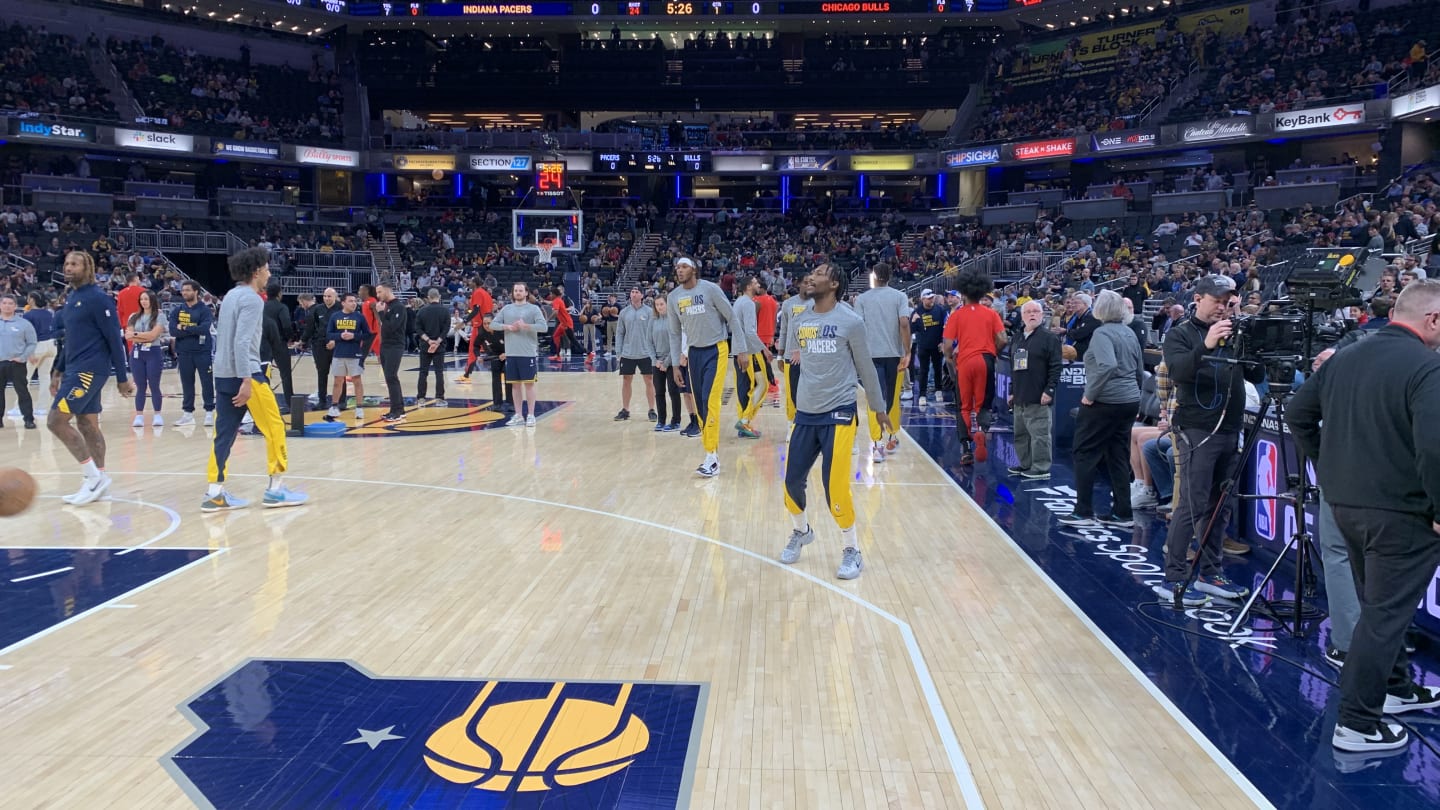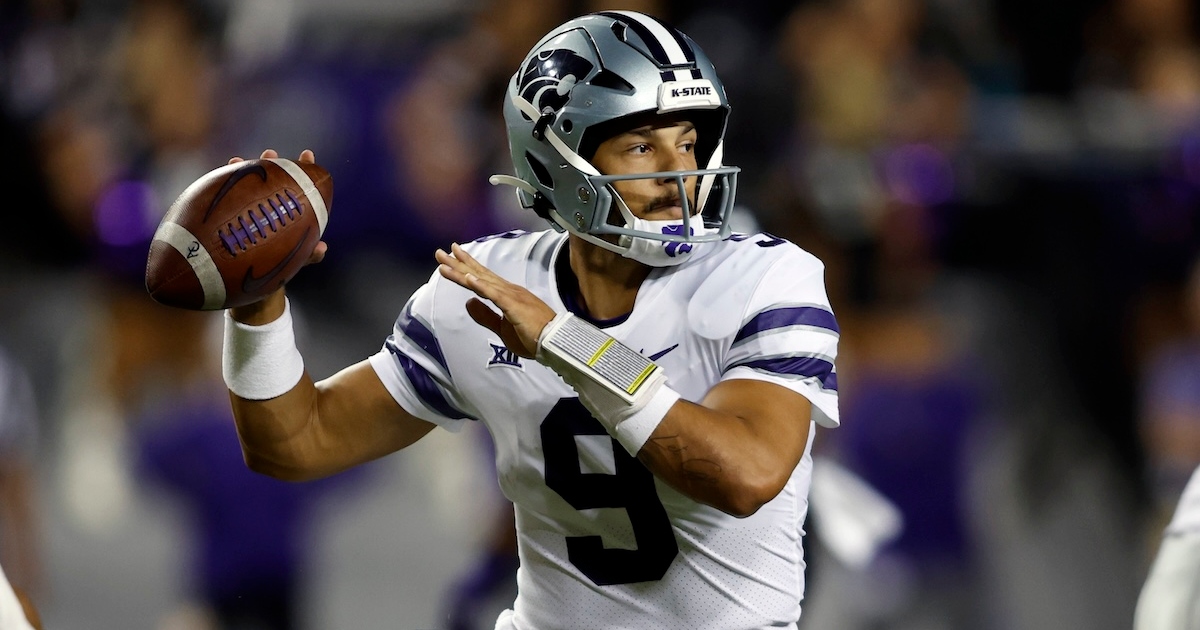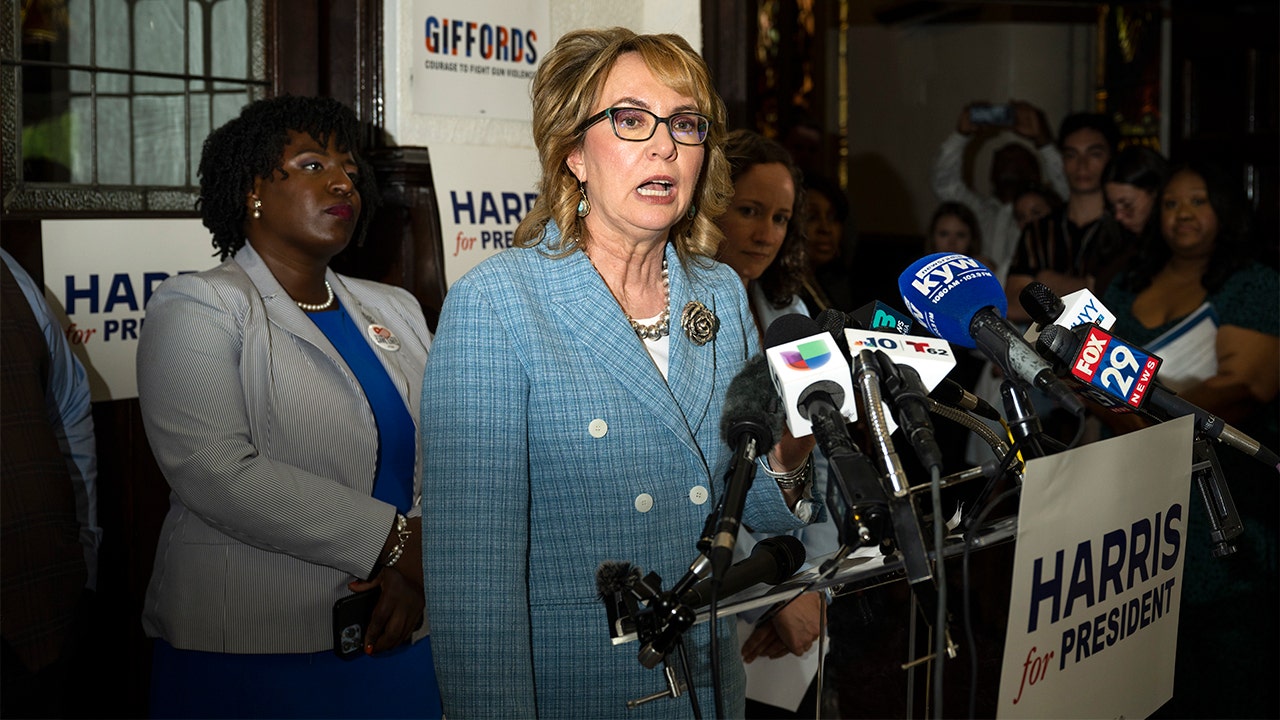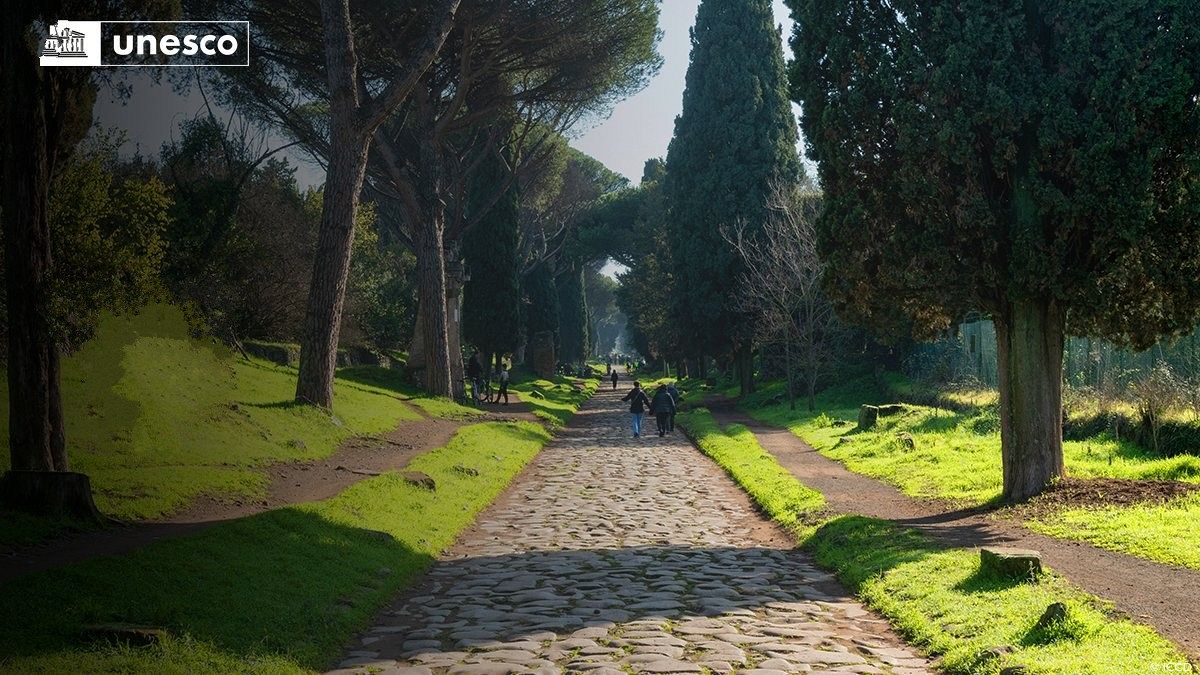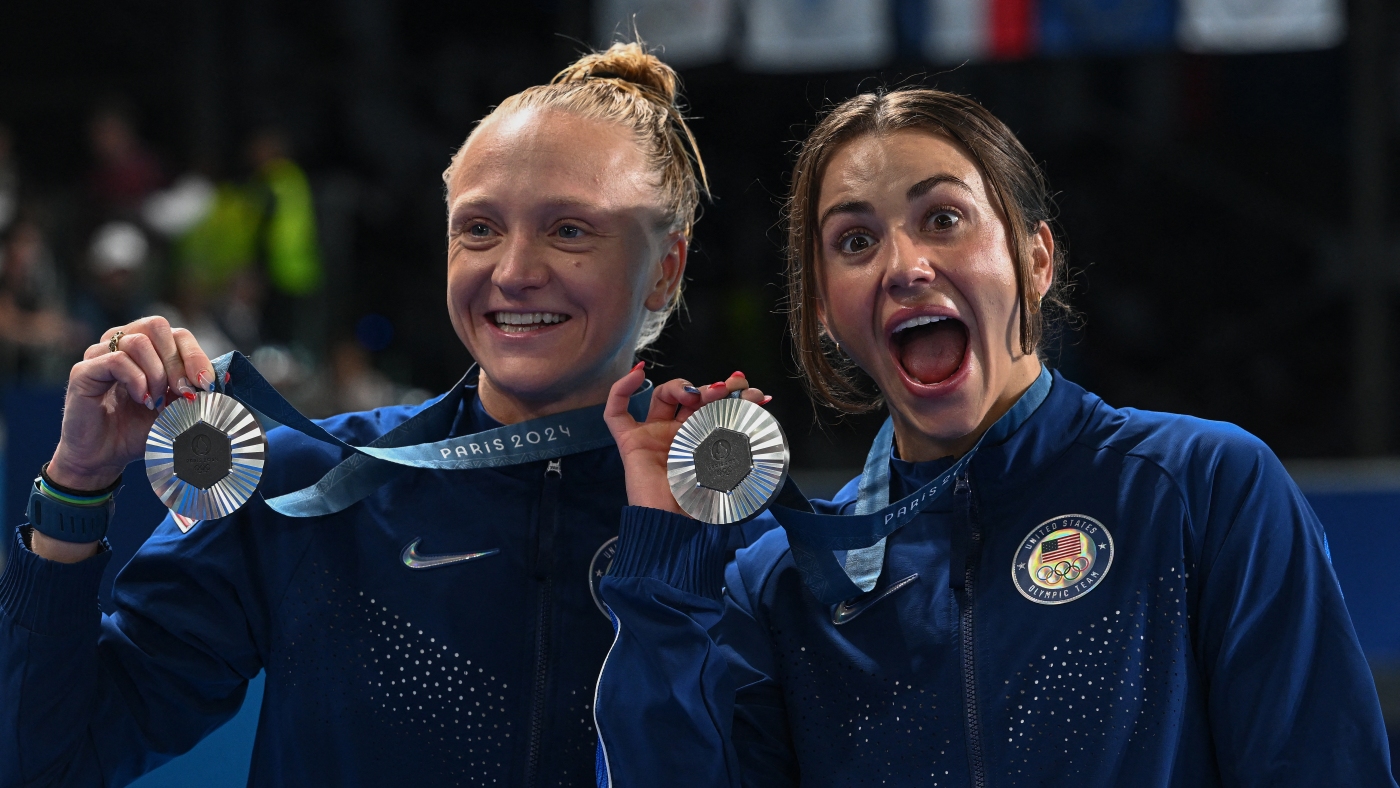Sports
Explained: The rules for under-18s competing in the Paris Olympics

As the eyes of the sporting world turn to host city Paris, extra focus will fall on the hundreds of children competing at the 2024 Olympic Games.
While some sports — including diving, gymnastics, wrestling and boxing — have minimum ages for when athletes can take part, others, such as skateboarding, surfing and table tennis, have no restrictions.
Skateboarding, which made its Olympics debut at the Tokyo Games in 2021 (delayed a year because of the Covid-19 pandemic), attracts a particularly young field, with Finland’s Heili Sirvio and Hasegawa Mizuho of Japan, who are 13, and Zheng Haohao, a Chinese athlete who is just 11 years old, appearing in the French capital.
So what are the rules on under-18s performing at the Games? How do these differ between various sports? Where do these children stay and how are they looked after?
What is the minimum age requirement for the Olympics?
There is no specific age limit to compete at the Games. Age restrictions are set by the international federations in charge of each sport, rather than the International Olympic Committee (IOC).
Arguably the most famous performance by a child at the Olympics was Romanian gymnast Nadia Comaneci receiving a series of perfect 10 scores from the judges at the 1976 Montreal Games when she was 14.
Comaneci was 14 when received a perfect score at the 1976 Olympics (AFP via Getty Images)
Several Olympic sports have no age restrictions, at either end of the scale. In skateboarding at these Games, for example, Great Britain & Northern Ireland have 16-year-olds Sky Brown and Lola Tambling competing alongside Andy Macdonald, who turns 51 next week.
However, for most other sports, there is a minimum age. For example, female gymnasts must now be at least 16 — and there have been growing calls for that to be raised to 18, in line with their male equivalents — while divers must be at least 14, as was the case with Team GB’s Tom Daley at the 2008 Olympics in Beijing, China. In judo, it’s 14, and in wrestling it’s 18.
In boxing, the minimum age is 19 and the maximum is 39. Special permission was given to Finland’s Mira Potkonen who was 40 in Tokyo after the Olympics were delayed by a year due to the pandemic. She went on to finish third in the women’s lightweight category, becoming the oldest boxer to win a medal at the Games.
The men’s football event is essentially an under-23s competition, but each 18-strong squad is allowed three overage members.
In the UK, athletes have to be at least 20 for marathons/race-walking and 18 to take part in throwing events, the heptathlon and decathlon and the 10,000m. Athletes as young as 16 can appear in other track events so long as they have “demonstrated a consistent level of performance, as well as previous experience at major international competition, which suggests that selection for senior competition is appropriate for their long-term development”.
In Paris, this is set to include 17-year-old Phoebe Gill in the women’s 800m. She could become the youngest British track athlete at an Olympics for more than 40 years.
How are child athletes protected at the Games?
At the Tokyo Olympics, the IOC brought in chaperones for under-16 athletes.
This time, the IOC is encouraging each national team to have a safeguarding officer and is offering two extra accreditations for welfare officers.
Athletes aged under 18 are allowed to stay at the Olympic Village, home to around 10,000 competitors across the Games, situated in the Saint-Denis area of northern Paris, near the Stade de France. However, whether they actually do so is down to each individual country.

Athletes under 18 will have to pair up with a buddy when they walk around the Olympic Village (Maja Hitij/Getty Images)
Scott Field, director of communications for Team GB, explained how careful attention is being paid to who their youngest athletes share a room with.
“We have a welfare plan that dictates how sports should manage where and who athletes room with, in the Olympic Village or other accommodation,” Field told The Athletic. “Under-16s would have a chaperone with them, who must also accompany them when outside of the Olympic Village/their satellite accommodation.
“We have an extensive welfare guide that supports young people in their stay at the Olympics. We also have a dedicated group of designated safeguarding officers who are on hand to provide welfare support throughout the Games.”
Australia has decided the three youngest athletes in its 460-strong team — Arisa Trew and Chloe Covell, both 14, and 15-year-old Ruby Trew, who are all skateboarders — will stay in a hotel rather than the athletes’ village, UK newspaper The Guardian has reported.
Those under-18s who are in the Olympic village will not share a bedroom with an adult. The apartments will have a supervisor, and the under-18s will have to pair up with a buddy when they walk around the athletes’ village. They will have a supervisor with them for any trips outside the village (requiring consent from parents), or they can be checked out by their parents.
The IOC added this year’s Olympics will have “the most comprehensive package of mental health and safeguarding tools, initiatives and services than any other sporting or Olympic event in history”. This includes having more than 160 accredited welfare officers from 87 national Olympic committees at the Games, a new AI-powered monitoring service to protect athletes from online hate, and two safeguarding officers in the Olympic Village.
What concerns has this led to?
In recent years, sexual-abuse cases, doping scandals and faking ages have shone a light on the concerns around the exploitation of child athletes.
This was seen most recently with the doping case involving Russian figure skater Kamila Valieva, who was 15 when she won gold at the 2022 Winter Olympics in Beijing. It emerged she had previously tested positive for trimetazidine, a heart medication banned by the World Anti-Doping Agency (WADA), and Valieva received a four-year ban, backdated to her positive result in December 2021.
Her young age fuelled a debate as to why only she had been punished, and not the Russian doctors who gave her the drugs. The Court of Arbitration for Sport revealed Valieva had been given 56 different medications and supplements between the ages of 13 and 15.
Travis Tygart, the United States’ anti-doping chief, said the number of medications given to her was “sickening”. Olivier Niggli, the director general of the WADA, described it as “shocking”, and said Valieva was “sacrificed” to protect those responsible.

Valieva won gold in Beijing but was later banned for four years (Lintao Zhang/Getty Images)
Under WADA’s code, under-16s are “protected persons”, which means they are subjected to lighter penalties, adding to the fears around exploitation.
Valieva’s case led to the International Skating Union raising the minimum age for athletes in its most high-profile competitions from 15 to 17, a change that would be phased in over three years before the next Winter Olympics in Italy in early 2026.
Meanwhile, the U.S. gymnastics sex abuse scandal saw Larry Nassar, a former doctor for USA Gymnastics, convicted and sentenced to over 300 years in prison in 2018 after being accused of abuse by more than 250 athletes, including four-time Olympic gold medallist Simone Biles. In the UK, a report into gymnastics in 2022 found there had been an epidemic of abuse, which included young athletes being starved and made to hang from the rings used in one of the sport’s events as punishment.
Going further back, X-ray bone analysis in 2009 revealed 3,000 young Chinese athletes had faked their ages — giving them an unfair advantage in competition.
Former WADA deputy director general Rob Koehler is now director general of Global Athlete, a group that has concerns about children competing at the Olympics at all.
“If you look at the Valieva case, it clearly indicated that young kids should not be going to the Games,” Koehler told The Athletic. “In any other professional sport, and this is professional sport, there are age limits — for example, in the NHL (the top ice-hockey league in the U.S. and Canada), before you can be drafted. They should use the Youth Olympics for youth athletes. That’s where there’s extra attention, time spent on education and time spent on culture.
“The WADA code also treats under-16s differently. That alone means you lose all the harmonisation and the quality.
“Do you want a 15-year-old child to have that much pressure on them at the Olympic Games? It’s a tough place to be.
“We think there needs to be age limits and they should be put in straight away.”
(Top photo: Skateboarder Zheng Haohao will compete in the Paris Olympics at age 11; He Canling/Xinhua via Getty Images)

Sports
NCAA releases details of proposed $2.78 billion settlement with former athletes
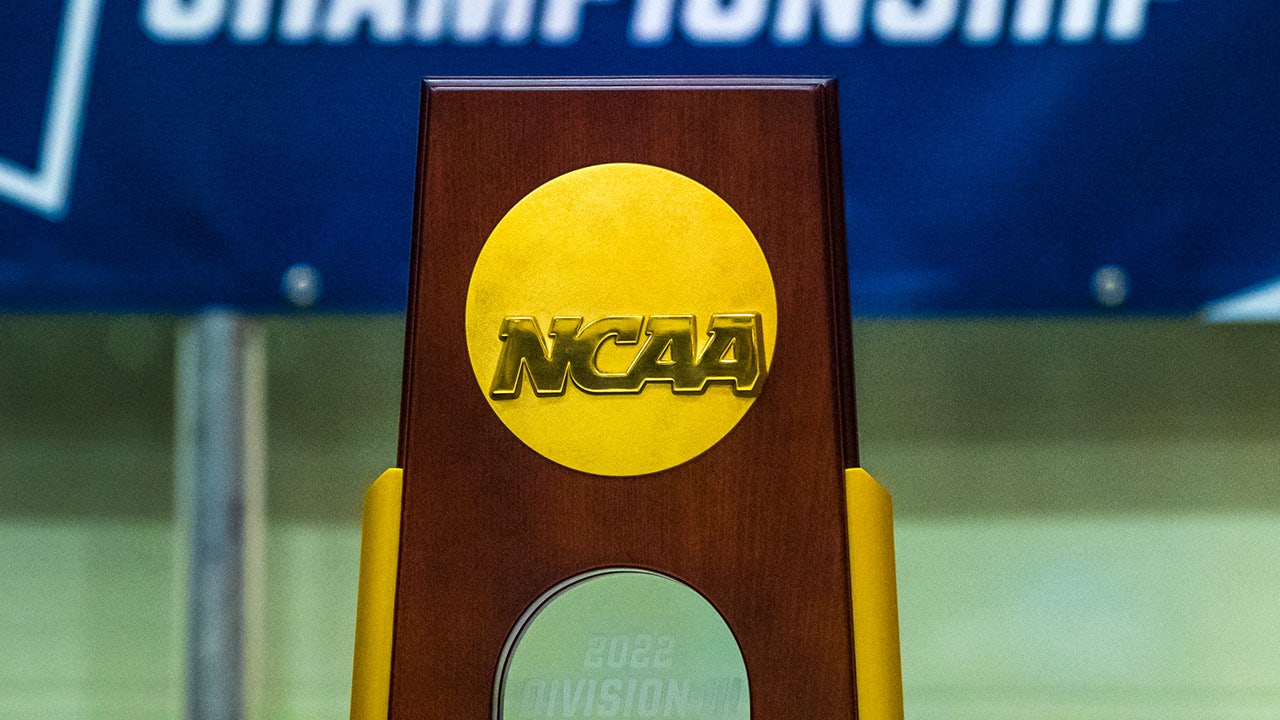
The NCAA and its power-five conferences filed a plan to pay out nearly $3 billion to former athletes in a settlement of an antitrust class-action lawsuit.
The proposed deal also paves the way for schools to directly compensate athletes while attempting to regulate payments from boosters.
“NCAA college athletes have waited decades for this moment, and their right to receive the full value of their hard work has finally arrived,” said Steve Berman, managing partner and co-founder of the Hagens Berman law firm. “We are incredibly proud to be in the final stages of historic change.”
Trophy and banner displayed during the NCAA Division III Women’s Ice Hockey Championship at Kenyon Arena on March 19, 2022, in Middlebury, Vermont. (Nancie Battaglia/NCAA Photos via Getty Images)
“College athletes will finally be able to share in the billions of dollars their compelling stories and dynamic performances have generated for their schools, conferences, and the NCAA,” the filing said. “This is nothing short of a seismic change to college sports following more than four years of hard-fought victories in this case.”
The $2.78 billion would be paid out over a 10-year period. Payouts will be determined based on the sport and length of athletic career, with most football and men’s basketball players able to receive nearly $135,000 each.
However, the highest estimated payout is expected to be nearly $2 million, thanks to “Lost NIL Opportunities,” according to the law firm.

A view of NRG Stadium as Nathan Mensah, #31 of the San Diego State Aztecs, and Adama Sanogo, #21 of the Connecticut Huskies, jump for the ball to start the game during the NCAA Men’s Basketball Tournament National Championship game at NRG Stadium on April 3, 2023, in Houston, Texas. (Logan Riely/Getty Images)
GEORGIA FOOTBALL STAR RODARIUS THOMAS BEING HELD WITHOUT BAIL AFTER ARREST ON FAMILY VIOLENCE CHARGES
The deal covers three antitrust cases — including the class-action lawsuit known as House vs. the NCAA — that challenged NCAA compensation rules dating to 2016. The plaintiffs claimed that NCAA rules denied thousands of athletes the opportunity to earn millions of dollars off the use of their names, images and likenesses.
The NCAA lifted its ban on athletes earning money through endorsement and sponsorship deals in 2021.
The agreement does not settle the issue of whether college athletes should be deemed employees, but it does include language that would suggest the deal would be subject to change if “a change in law or circumstances permits collective bargaining.”
“This settlement is an important step forward for student-athletes and college sports, but it does not address every challenge,” the commissioners of the Atlantic Coast Conference, Big Ten, Big 12, Pac-12, Southeastern Conference and NCAA President Charlie Baker said in a joint statement. “The need for federal legislation to provide solutions remains. If Congress does not act, the progress reached through the settlement could be significantly mitigated by state laws and continued litigation.”
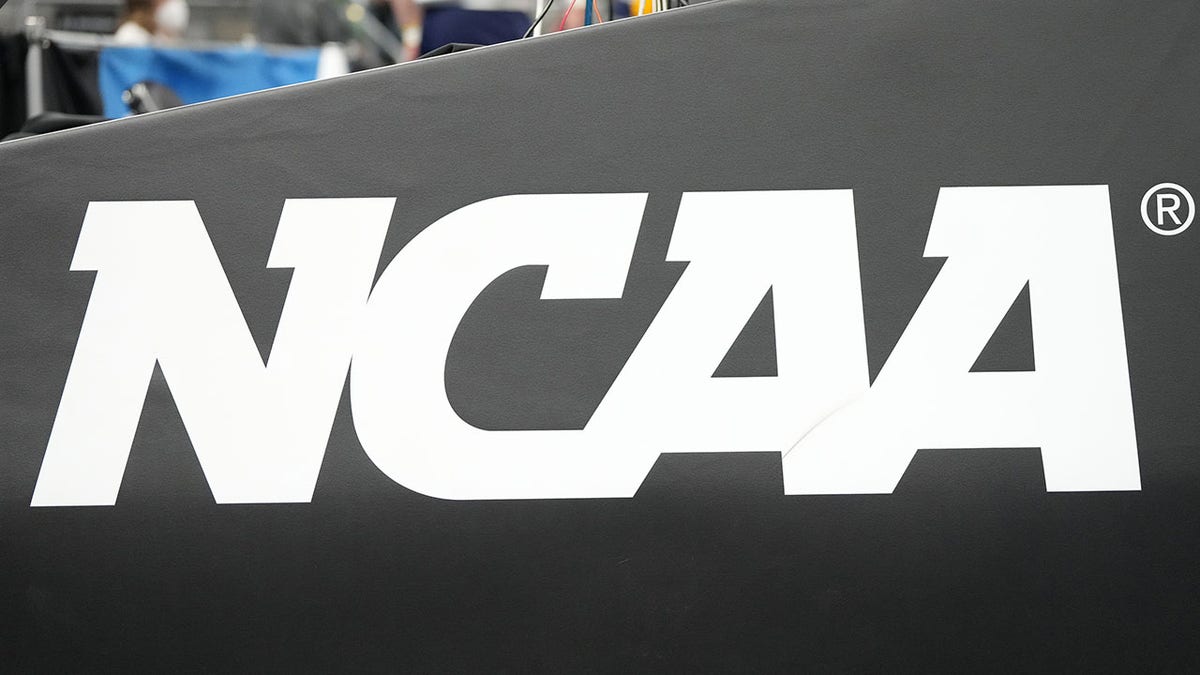
The NCAA logo shown on the basket pad before the Second Round NCAA Men’s Basketball Tournament game between the Marquette Golden Eagles and the Colorado Buffaloes at Gainbridge Fieldhouse on March 24, 2024, in Indianapolis, Indiana. (Mitchell Layton/Getty Images)
The filing still needs to be approved by a judge, but attorneys say they will file a motion for preliminary approval and, if granted, a public website will go up in about two months, where former college athletes can determine how much they are eligible to receive.
The Associated Press contributed to this report.
Follow Fox News Digital’s sports coverage on X, and subscribe to the Fox News Sports Huddle newsletter.
Sports
Swimming has a diversity problem. Can this generation of Olympians change that?
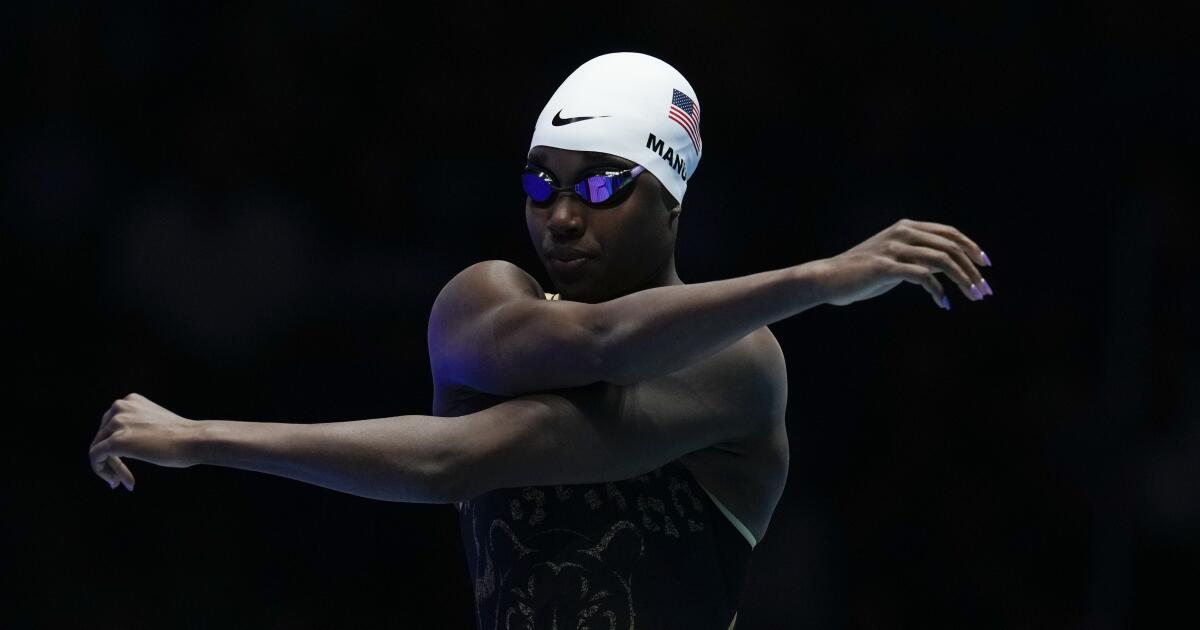
When Maritza Correia McClendon started swimming in Puerto Rico, she stood out because of her talent, not the color of her skin.
“There’s a lot of diversity in Puerto Rico,” said McClendon, who is Black and Latino, as are one in five people on the island.
Then her Guyanese-born parents moved to Florida when she was 8. Though she had become even faster in the pool, that was no longer the first thing people noticed about her.
“I remember a parent telling me, ‘What are you doing here? You should go do track or you should go on a basketball court,’” she said. “They were almost shaming me for being that outcast on that pool deck.
“That is definitely traumatizing. It’s still hard for me. I do definitely still struggle with that confidence factor.”
McClendon overcame that to become the first Puerto Rican of African descent to make the U.S. Olympic swimming team, the first Black female to win an Olympic medal for the U.S. and the first Black American swimmer to hold a world record.
2024 Paris Summer Olympic Games
In an effort to get others to follow her lead, McClendon is now among a growing number of former swimmers, coaches, officials and administrators working to make the sport more accessible and welcoming for people of color, from the grassroots level, where she was once shunned, to the Olympic team, where she shined.
The Paris Games has the opportunity to provide a big boost in those efforts when the swimming competition begins Saturday. Although only two of the 46 pool swimmers who will compete for the U.S. in Paris are Black — and none are Latino — those two, Shaine Casas, a three-time world champion, and Simone Manuel, a two-time Olympic champion and five-time Olympic medalist, have a chance to inspire a generation.
“If you’re not seeing somebody that you can relate to as a swimmer, then who’s going to be your role model?” said Steve Roush, executive director of Southern California Swimming, the grassroots affiliate of USA Swimming and the largest of the nation’s 59 local swim committees. “When you’ve seen over the last few years people like Simone Manuel, interests in the Black population say, ‘Hey, I guess we can swim. I guess there are spots for us.’ If they’ve never seen a Black on an Olympic or national team, then it’s really hard for them to think, ‘That’s what I want to do.’”
USA Swimming says less than 5% of the athletes registered with the federation are Black or Latino. Those groups account for 31% of the U.S. population. The level of representation on the Olympic team is no better. The reason for that has little to do with talent.
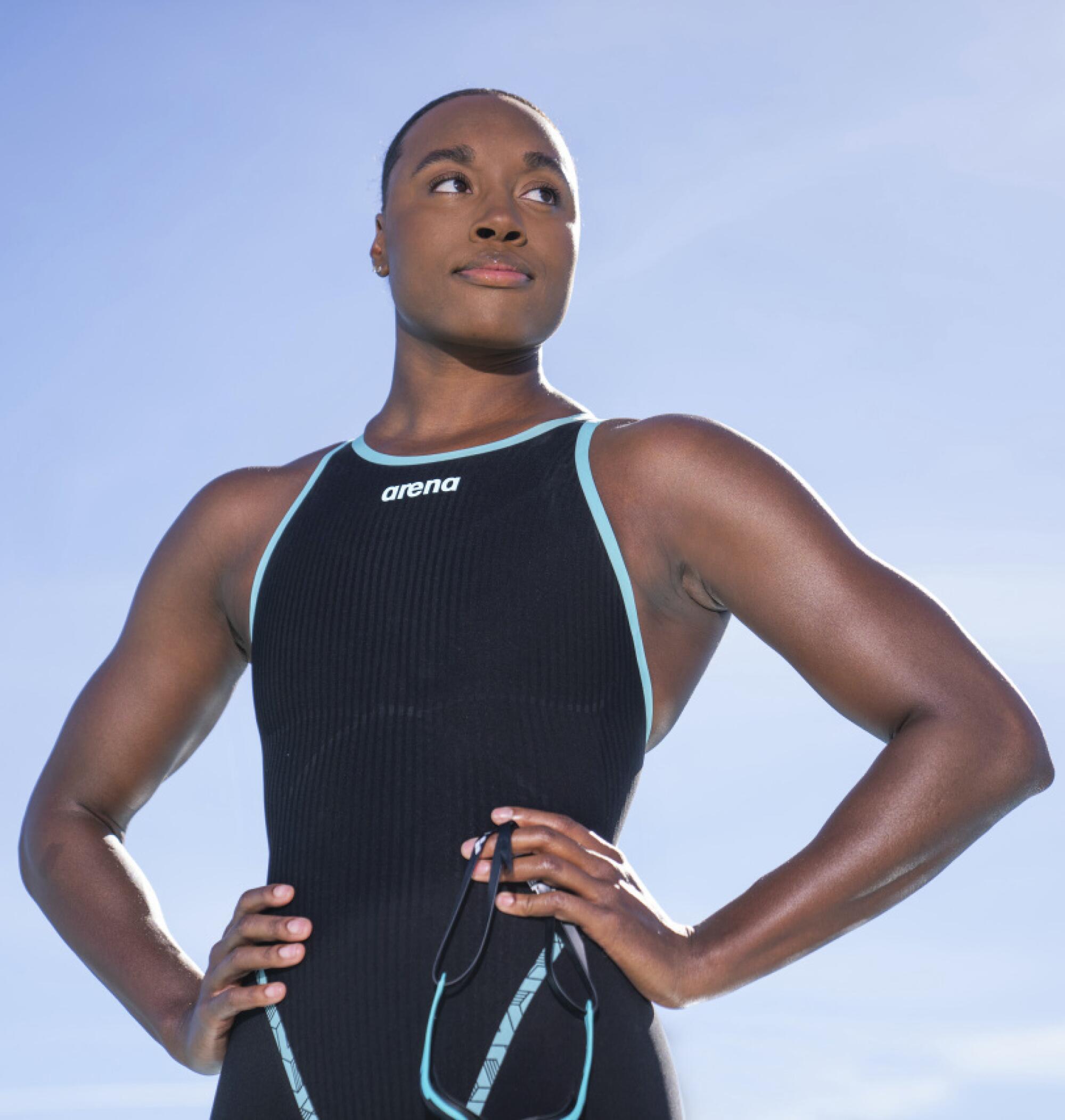
Simone Manuel will be competing in the women’s 50-meter freestyle at the Paris Games.
(Jack Spitzer / Associated Press)
“It’s not an athletic thing,” said Nic Askew, coach of the swim team at Howard University, the only HBCU to compete in the sport. “Anyone of any race and culture can be an amazing athlete in anything. But when you look at the history and the neglect, it absolutely is more social and socioeconomic.”
Until the last half of the 20th century, Black people and Latinos were commonly prohibited from using public pools and beaches. When those bans were lifted, the lack of swim facilities in inner-city neighborhoods became a new impediment to the sport.
“It’s very, very expensive,” McClendon said. “Not only for the person to learn how to swim, but also for the community to keep a pool open. The cost of the water, the chemicals, lifeguards. Every part of it tends to be very expensive.
“That’s a big hurdle. Another one is generational trauma. When our parents were growing up in segregation, they weren’t even allowed to go to the pool. So there became a fear of going to the water.”
That lack of access has had consequences that stretch beyond making an Olympic team. According to a 2021 study conducted by the USA Swimming Foundation and the University of Memphis, more than two-thirds of Black children do not know how to swim. The number is 45% for Latino children. As a result, the Centers for Disease Control and Prevention found the rate of drowning deaths among Black children aged 10-14 is 7.6% higher than whites of the same age while the rate for Latinos rose 25% between 2019 and 2022.
“Swimming,” McClendon said, “is the only sport that is also a life-saving skill.”
Yet as long as children of color don’t see themselves represented there, they will continue to believe swimming is not for them. That makes the Olympics — and especially the presence of athletes such as Casas, Manuel and Cullen Jones, the first Black American swimmer to break a world record — so important.
Casas, 24, a former world champion in the backstroke, will swim the 200 individual medley in Paris. That event begins Aug. 1. Manuel, who turns 28 next week, will swim the 4×100 freestyle relay Saturday and the individual 50 freestyle next week. She won gold medals in the 100 freestyle and the relay in Rio de Janeiro in 2016 and won a relay bronze in Tokyo three years ago.
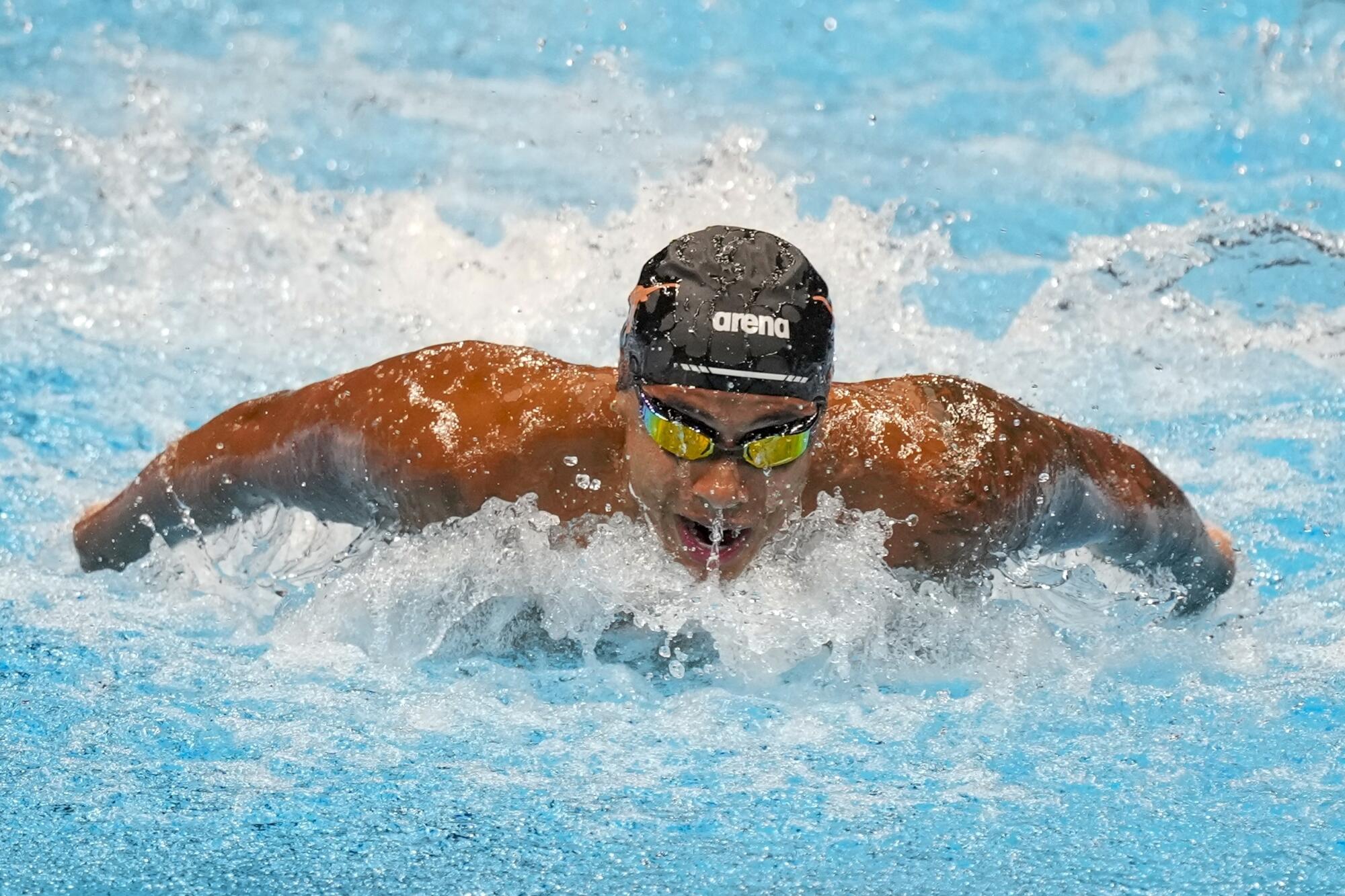
Shaine Casas swims during the men’s 200 individual medley preliminaries at the U.S. Olympic swimming trials in June.
(Michael Conroy / Associated Press)
If both can repeat their success in France, it could provide a big boost to make swimming more diverse in the U.S.
Progress is being made on other fronts as well. In Paris another barrier will fall — and another example will be created — when Anthony Nesty, a former gold medalist for Suriname and the coach at the University of Florida, becomes the first Black head coach of a U.S. Olympic men’s swim team. At the grassroots level, Roush said nearly a fifth of Southern California Swimming’s 20,000 athletes are Latino, a record for the region.
“The participation’s there,” he said. “I think we are reflective of the diverse ethnicity within Southern California. But these numbers aren’t reflective of what’s out there on the national scene.”
Making those numbers reflective of the population at large is important for a number of reasons, said Richard Lapchick, president of the Institute for Diversity and Ethics in Sport at the University of Central Florida.
Tennis, for example, shed its country club image when Serena and Venus Williams began to dominate the sport. That has not only brought more fans and more revenue to the sport, it has brought more and diverse participants as well, with the number of people playing the sport in the U.S. increasing by 33% between 2020 and 2023.
Not surprisingly that growth was most dramatic among people of color with the number of Latino players growing by 90% over that three-year period while Black participation increased by 46%.
“In any area, if you’re not raising a population that is representative of the entire country, you’re excluding [many] that could have been [great],” Lapchick said.
“Part of the reason why it would be helpful if [swimming] was more diverse, there are people who won’t pay attention to swimming because they look at it as a sport that’s exclusive rather than inclusive.”
Without the Williams sisters, we might never have gotten Coco Gauff. And without Black Olympic gymnastics champion Gabby Douglas, we might never have gotten Simone Biles. Over the next nine days, Casas and Manuel have a chance to do the same for Black and Latino swimmers. That opportunity is a fleeting one that only comes around once every four years.
“The one time historically that swimming is at the top of the media or a topic of conversation is during the Olympics,” Askew said. “But the Olympic cycle is every four years. So to be able to see athletes like Shaine and Simone now, it’s phenomenal.
“This is a space that a Black person can be at this elite level.”
Sports
Leny Yoro, from Paris boy to Man Utd: 'He had the same speed as Kylian Mbappe'

There are always Sliding Doors moments in a player’s career; points when a lifetime’s path takes a critical turn, based on what feels like a coin toss.
In Leny Yoro’s case, it happened in the form of a red card.
On October 20, 2021, Baptiste Rolland’s dismissal for Lille Under-19s against their Sevilla counterparts in the UEFA Youth League transformed Yoro’s trajectory. Centre-back Rolland was dismissed in the 79th minute for pulling the shirt of Diego Rodriguez. Yoro, just 15 years old and previously a striker and then midfielder, came on to play in defence for the final few minutes, his first appearance for the French club’s under-19s side. The sending-off and Rolland’s subsequent suspension meant Yoro would start the team’s next Youth League fixture, the return at home against Sevilla.
It was the last time Olivier Szkwarok, who was in charge of Lille Under-16s at the time, would coach him.
“When Leny was an under-16, I said to the under-19 coach that he needs to play in the under-19s, but he didn’t have a place for him,” Szkwarok, now working as a youth coach at Toulouse, another French club, tells The Athletic. “But the first time he (started for the under-19s), he never returned with me. He was the best on the pitch.
“On that day, Liverpool and Monaco saw a lot of potential in him. After that, he was with the under-23s, and it was easy for him. Lille needed him to sign a professional contract and they invited him into the first team. Jocelyn Gourvennec, the first-team coach, loved his potential and said he could train with professionals full-time.
“I was a little surprised, but not surprised. Leny is a competitor and a hard worker.”
Yoro had joined Lille in 2017 from local side Villeneuve-d’Ascq. He initially grew up in Saint-Maurice, a suburb of Paris, 137 miles (222km) to the south, where he played his football in a playground opposite his home. Then he played for Alfortville, in the south-east of the French capital. His three brothers — Esteban (14), Eden (12) and Romeo (10) — all play football too; his father, Alain Yoro, had been in Lille’s academy himself as a teenager.
When Yoro was young, his parents split up and his mother, Flore Baugnies, moved the family to Bormes-les-Mimosas on France’s south coast for six months, before then going to Lille, in the north of the country near the border with Belgium, to be closer to family. That was when Yoro joined Villeneuve d’Ascq, known locally as VAM.
United’s Yoro battles with Rangers’ John Souttar last week (Ian MacNicol/Getty Images)
“The club is located in a working-class neighbourhood,” recalls Aboubacar Sankhare, the former Lens, Toulouse and Dusseldorf defender. “At the time Leny was there, I was the club’s general manager. He stayed at the club with his brothers for two-and-a-half to three years.
“From a very young age, he had this ability to adapt quickly, and he had this maturity. He understood instructions very quickly. He already had intrinsic qualities of his own. He played with the team of his age and a higher category (age group). He had his siblings, and his mother came to see them every day at the stadium. It was a social club.”
VAM fell into financial difficulties and no longer exist. At the time, though, Sankhare was leading the club’s social and educational projects, in addition to training youth sides with a view to some of those kids reaching the first team. In addition to Yoro and his brothers, Sankhare’s sons, Yssouf and Zakary, also joined professional clubs after playing at VAM.
Yoro stood out. But not in the position you would expect.
“He was a striker with us, and could play in all positions because he could adapt extremely quickly,” recalls Sankhare. “The Lille scouts came several times and reported on him. At the time, there were the biggest clubs in the region — Lens, Lille, Valenciennes, Dunkirk, Boulogne — who came to scout. He became a defender at Lille.”
When he went to Lille for a trial, Yoro impressed immediately. That was when Szkwarok, who coached the under-13s and then the under-16s at the club, first saw him play. “I loved him from the trial,” he recalls. “He was a different player. When he was 12, he was the same as now. For a tall player, he had good technique. But he was missing the speed. He had a good personality. Like today, he was a leader who always encouraged his team-mates.”
The years Szkwarok worked with Yoro bookmarked a critical period in his development. Yoro initially played in midfield, before switching positions. “He was a defender full-time from under-15,” says Szkwarok. “He had a very good technical level and a very good in-game intelligence. He can see and play quickly, with his left or right foot, and I think, at professional level, he can play in midfield if a coach needed him to. A little bit like John Stones at Manchester City. In my opinion, Leny has a better potential than John Stones.”
But not everything was straightforward.
“All of the coaches loved him for his personality but not all of them believed in him,” says Szkwarok. “In the under-14s, it was a little bit complicated. A coach said in a meeting that Leny does not have the potential to play at the highest level. For me, it was a big error to say that about Leny. Because he was a tall player, and we needed to give him a little bit of time to grow up, and after he can show his potential.”
Yoro had a growth spurt before the age of 16. Speaking to French newspaper La Voix du Nord, mum Flore recalled how “he gained 10 centimetres (almost four inches)” during his under-16 year but “all year long, he was injured”. “He injured himself, without taking any hits during matches,” she said. Yoro had to adapt to his changing body and Lille tailored their coaching to deal with his small, repetitive muscular issues.

Yoro going up against Kylian Mbappe in Ligue 1 last year (Franck Fife/AFP/Getty Images)
“Leny was always the tallest but he grew and it (led to) small injuries,” says Szkwarok. “He had them often. Two days (out of action), three days, four days. We found a solution and after we changed our method of training with him, he could train all day and played all the games.
“When he was an under-16, at the beginning of the season, we went to a small tournament. He hadn’t played during the season so in his first game, to protect him, I put Leny in midfield. Against (Belgium’s Club) Bruges and PSV (Eindhoven, from the Netherlands), he played very well. In defence you have to make more runs in behind, longer runs, and in midfield they are shorter.
“In order to adapt to his new body, he worked a lot. That’s why he’s always a good player technically and this part of his character is a very good example for his career in football.”
Yoro became one of the quickest and strongest in the group. But those years without exceptional pace had honed his ability to read the game too. It is a key trait, normally confined to experienced players, and it is something scouts picked up on when assessing him.

GO DEEPER
Leny Yoro to Manchester United: The Athletic 500 transfer ratings
“When he played against (France captain and now Real Madrid forward) Kylian Mbappe, he had the same speed as him,” says Szkwarok. “But when he was younger, Leny did not have a lot of speed and he developed the ability to read the game, both defensively and offensively. It is his best quality. A very intelligent player.
“He had the mentality of a defender. He loved defending, he loved intercepting the ball, winning the ball with his head. It is a little bit rare to have both qualities, to have technique and the mentality of a defender.”
Then came those under-19s matches against Sevilla in late 2021, under coach Stephane Pichot, and Yoro’s progress went up several gears. “It all started from there, because he played two more Youth League matches afterwards,” his mother said. “That’s where his No 15 comes from (which Yoro will now also wear at Manchester United). Because it all started when he was 15 years old.”
In October 2021, Yoro played with Lille Under-19s for the first time. By the following May, then aged 16, he had made his debut for their first team — coming off the bench away at Nice. In the process, he became the club’s youngest player since Joel Henry in 1978, surpassing Eden Hazard. He was invited to stay with the first team under new manager Paulo Fonseca in summer 2022 and, after just two days of pre-season training, the Portuguese coach had made up his mind.

Yoro holding back Aston Villa’s Ollie Watkins in the Europa Conference League last season (Justin Tallis/AFP/Getty Images)
“In all my years as a coach, I’ve never seen such a young player with so much maturity,” Fonseca told The Athletic last year. “He has so much class. So much elegance. He’s a beautiful player.” In the September, he became Lille’s youngest starter since Oumar Dieng in 1989.
“When we started to work with Leny, we saw a lot of potential,” Tiago Leal, Fonseca’s assistant, tells The Athletic. “We didn’t care about his age. We care about his skills. Technically, tactically, mentally, personality, character… he had many things that for his age were not normal.”
Taking the step into the professional game is never plain sailing, though. His full debut against Toulouse, a 2-1 Lille win, was a case in point. He won four of five aerial duels but also made an error that led to the Toulouse goal — a loose pass. He needed time, and the right environment, to adjust.
Under Fonseca, he would get that. Now in charge at AC Milan, Fonseca is no stranger to bringing through young talent, doing so with Diogo Jota (now of Liverpool and Portugal) at Pacos de Ferreira and then Mykhailo Mudryk (Chelsea and Ukraine) at Shakhtar Donetsk.
“In the first season, he made many mistakes that cost us many games, but for us, it was not a problem at all,” says Leal. “We knew it was part of the process with younger players. He was brave, because he never stopped trying to do what we demanded of him. We made a bet on him and as a team we were ready to pay the costs of this bet.”
Yoro’s first season of senior football was a learning curve. He made eight league starts and 15 appearances for Lille’s first team. How he responded to those inevitable rookie errors set him apart. “He’s really mature, his composure is not normal at his age,” says Leal. “That’s what impressed us. It wasn’t just because of his physical or technical qualities. It was the package. He was different from most of the others at his age.
“When he made mistakes, what I felt is that he was always stable, and that says a lot about his personality. He was always focused on his work, always trying to improve every day, not dependent on winning, losing, making a goal or not. He was always stable. That’s why he has this level of attention with Real Madrid, Paris Saint-Germain, clubs like that spotting him. Because it is special at his age.”
𝑻𝒉𝒆𝒏 & 𝒏𝒐𝒘 😍
Leny Yoro et nos diplômés 2023 ont reçu leur BAC lundi au Domaine de Luchin 🎓@leny_yoro ❤️ pic.twitter.com/ZjaMixgnX4
— LOSC (@losclive) April 24, 2024
Under Fonseca, Lille played an expansive brand of football, the coach demanding that his team press high up the field, take risks in possession and sometimes leave their defenders exposed with half a pitch of space in-behind. “Leny showed from the very beginning that he wanted to learn, to improve, and this is an important aspect of his character,” says Leal. “He is humble. When you have the skills technically, and when you are physically blessed — he’s really tall, fast, explosive — you need the desire to be better and courage to play the game we demand. He showed that from the beginning.”
His second season, 2023-24, bore fruit. Yoro started 30 league matches and featured in 44 games in all competitions. He succeeded the experienced Jose Fonte in Lille’s starting lineup, who had been a “role model” for him within the group according to Leal, along with the new captain Benjamin Andre. “He needed the mix of many things to help the flower grow,” says Leal. “We didn’t create the flower, we just gave it water, nutrients — the others and us are the gardeners.
“In the second season, he became the player we expected. He became more confident in himself, started to build this ego that you need, because he was ready to take his place in the team. He became almost complete. And we are speaking about a kid. I don’t have any doubts, about Leny. He’s getting what he deserves.”
His form earned him a place in the Ligue 1 team of the season, and elevated his status to one of the most exciting centre-backs in Europe. It was enough to persuade Manchester United to spend £52million ($65m; €62m), potentially rising to £59m, and fight off serious competition, making Yoro the most expensive player ever aged 18 or younger. (Mbappe was signed initially on a season’s loan by PSG before his €180m transfer from Monaco at age 19.)
Throughout his career, Yoro has quickly adapted to every challenge. United, English football and the Premier League will be a different order of magnitude but Leal feels he can thrive again.
“We cannot forget he is a young kid,” he says. “He is not going to solve every problem at Manchester United. Not alone. But if he gets a proper environment around him and the space and confidence to participate, I’m pretty sure he is going to be a main player for them.”

GO DEEPER
How Manchester United beat Real Madrid to the signing of Leny Yoro
(Top photos: Getty Images; design: Eamonn Dalton)
-

 World1 week ago
World1 week agoOne dead after car crashes into restaurant in Paris
-

 Midwest1 week ago
Midwest1 week agoMichigan rep posts video response to Stephen Colbert's joke about his RNC speech: 'Touché'
-

 News1 week ago
News1 week agoVideo: Young Republicans on Why Their Party Isn’t Reaching Gen Z (And What They Can Do About It)
-

 Movie Reviews1 week ago
Movie Reviews1 week agoMovie Review: A new generation drives into the storm in rousing ‘Twisters’
-

 Politics1 week ago
Politics1 week agoFox News Politics: The Call is Coming from Inside the House
-

 News1 week ago
News1 week agoVideo: J.D. Vance Accepts Vice-Presidential Nomination
-

 News1 week ago
News1 week agoRNC speakers want to separate the president from the person to show softer side of Trump
-

 World1 week ago
World1 week agoTrump to take RNC stage for first speech since assassination attempt






